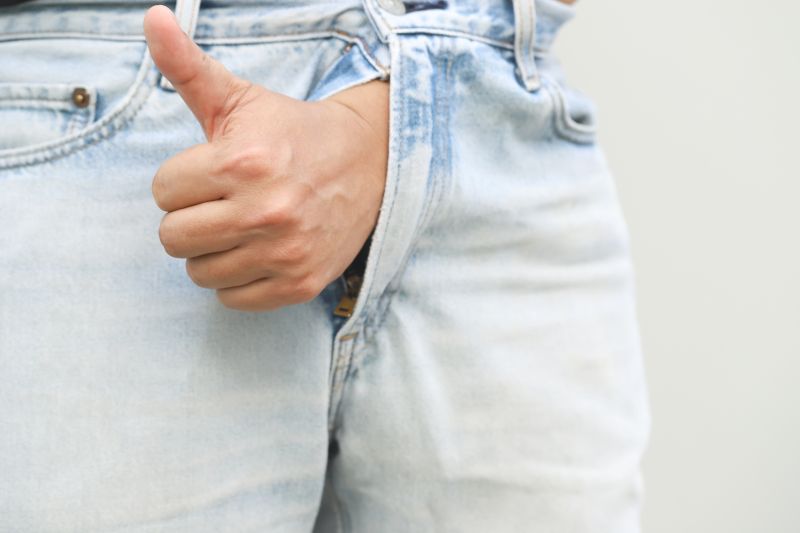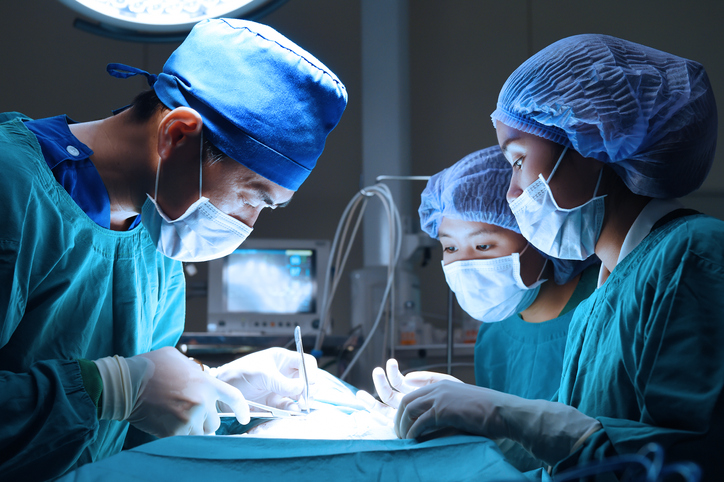
Effectiveness of Adjunct Procedures with Penile Implant for Treatment of Peyronie’s Disease

Peyronie’s disease (PD) is a disorder in the penile tunica albuginea, which is just under the skin of the penis and surrounds the tissue that creates and maintains erections. It can cause penile deformity, namely curvature, and pain, and can negatively impact quality of life. This could be due to curvature severity, loss of length or girth, and even erectile dysfunction (ED). ED is quite common in patients with PD, ranging from 31.5% - 54.4% of patients in existing literature.
Inflatable penile prosthesis (IPP) is the current guideline-recommended treatment for patients with ED and PD concurrently, especially in severe cases. IPP helps to restore or improve erectile function and with penile curvature correction. In the case that IPP alone will not help with improving a curve from PD, there are several additional surgeries that may be carried out alongside IPP placement.
- Manual modeling: Often the first choice, and the most used treatment, manual modeling manipulates the penis around the inflated IPP to reduce curvature, rather than the IPP simply being placed in the penile shaft.
- Tunica albuginea plication (TAP): For the next level of severity, this method manipulates the erectile tissue to the opposite side of the curvature, creating tension that should straighten the penis.
- Plaque incision with skin grafting (PIG): The most complex of the three, this method involves cutting out the plaque which causes curvature and replacing it with a graft to straighten the penis.
The treatment option chosen for PD is typically guided by the severity of curvature, with previous literature stating that anything over a 30° curve should consider TAP or PIG alongside IPP placement. As the severity of the curve or condition increases, more invasive surgical treatments are typically considered over less invasive options.
Recent studies mention that IPPs (with or without additional procedures) allow for men with a combination of PD and ED to experience satisfying sex, improving their quality of life. However, there is limited research or data comparing the outcomes for these additional procedures in PD patients across a variety of clinical settings. To mitigate this lapse in information, a recently published study evaluated the absolute penile curvature pre- and post-operation, as well as complications during and after procedure. This ended up being the largest evaluation of its kind to date.
Four hundred and ninety-five (495) patients with PD and ED concurrently who were undergoing IPP placement (with or without additional procedures) by 11 different surgeons from various clinics across Europe and the U.S. were evaluated between July 2016 and July 2021. After taking demographic information, it was found that the median age of patients was 62, and the average follow-up period was 16.5 months.
Of these patients, 373 (74.7%) underwent manual modeling, 24 (4.6%) underwent TAP, and 10 (2%) underwent PIG in addition to their IPP placement. That left 88 patients undergoing IPP placement only. The median pre-operative curvature of each patient group increased as the procedure became more invasive, supporting existing practices. The IPP-only pre-operative median curvature was 30°, manual modeling, 35°, TAP, 42.5°, and PIG, 60°.
Current literature suggests that IPPs with or without manual modeling can be sufficient to reduce curves under 30°. However, this study showed that doctors were using IPPs and manual modeling without additional procedures for curvatures higher than that, with the median pre-operative curvature being 35° for the manual modeling group. Additionally, TAP was utilized at a median pre-operative curvature of 42.5°, and PIG at a median pre-operative curvature of 60°. Researchers say this is likely due to existing surgical processes suggesting additional procedures to start with manual modeling and work up to PIG as more of a last resort for the most severe cases.
It's suggested that PIG was the most effective method, but that it was only used for healthier patients with more extreme curvatures. The PIG patient group showed lower rates of diabetes and other complications, and the IPP-only group showed the highest proportion of hypertension and smoking in pre-operative data. The data also showed that the PIG group had no curvature following their procedure, while the TAP group had a median curvature of 10°, and the manual modeling group had a median curvature of 9°. This could be due to the fact that PIG is the more extreme procedure, and healthier patients are more likely to recover with minimal complications.
This study reaffirms existing research on the overall safety and feasibility of IPP placement regardless of adjunct procedures. PIG is typically reserved for healthier patients without other significant conditions. It is also the most effective, preferred for patients with pre-operative curvatures around 60° or higher, showing almost no curvature following the procedure. This suggests that the role of clinical considerations is especially important when guiding patients toward selecting an appropriate procedure based on their individual condition.
It’s suggested that future research should standardize protocols and include longer follow-up periods, as the variability of self-reporting may have created some biased results. Researchers stress that IPP placement combined with modeling remains essential for immediate and low-risk correction of penile curve, and it may minimize the need for further, more complex procedures. However, urologists can optimize the outcomes of IPP placements by offering a more diversified range of interventions based on a patient’s unique situation.
References
- Hammad, M. A., Barham, D. W., Simhan, J., Nguyen, T., Swerdloff, D., Miller, J., Hatzichristodoulou, G., Sempels, M., Andrianne, R., Hotaling, J. M., Hsieh, T.-C., Jones, J. M., Modgil, V., Osmonov, D., Pearce, I., Perito, P., Sadeghi-Nejad, H., Suarez-Sarmiento Jr, A., Yafi, F. A., & Gross, M. S. (2024). A multicenter evaluation of penile curvature correction in men with Peyronie’s disease undergoing inflatable penile prosthesis placement. The Journal of Sexual Medicine, 22(2), 349–355. https://doi.org/10.1093/jsxmed/qdae192




